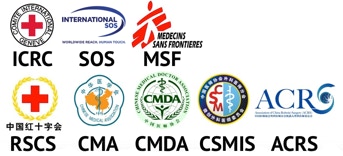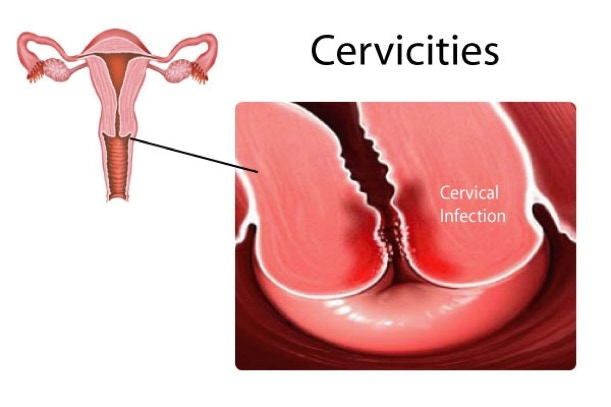

Doctors
Institutions
Conditions
Drugs
Insurances
TCM
Research
About Us
Contact Us
What is cervicitis?
Cervicitis is an irritation or infection of the cervix. A number of different organisms can cause it. Cervicitis can be acute, meaning symptoms start suddenly and are severe. Or it can be chronic, lasting several months or longer.
What causes cervicitis?
Cervicitis may be caused by a number of sexually transmitted infections including:
Gonorrhea
Chlamydia
Herpes
Trichimoniasis
Cervicitis may also be caused by vaginal infections, such as bacterial vaginosis.
It is often confused with vaginitis.
What are the symptoms of cervicitis?
Each woman’s symptoms may vary. The following are the most common symptoms of cervicitis:
Discharge that contains pus (purulent discharge)
Pelvic pain
Bleeding between periods or after sexual intercourse
Urinary problems
Infections within the vagina are easily passed to the cervix. Then the tissue of the cervix can become inflamed and form an open sore. One early sign of this is a pus-like vaginal discharge.
The symptoms of cervicitis may look like other conditions or health problems. Always see your healthcare provider for a diagnosis.
How is cervicitis diagnosed?
Along with a complete medical history and physical and pelvic exam, you may also be tested for chlamydia, gonorrhea, herpes, bacterial vaginosis, and trichimoniasis. Your healthcare provider will also do a vaginal exam to see if you have pelvic inflammatory disease.
How is cervicitis treated?
Your healthcare provider will figure out the best treatment plan for you based on:
Your age, overall health, and medical history
Extent of the disease
Type and severity of the symptoms
How well you handle certain medicines, treatments, or therapies
If your condition is expected to get worse
Your opinion or preference
Treatment is aimed at reducing symptoms and preventing spread of infection. Treatment may include:
Antibiotics (to kill infecting organisms)
Treatment of sexual partners
What are the complications of cervicitis?
The organisms that cause cervicitis can move up into the uterus and fallopian tubes if not treated. This can cause pelvic inflammatory disease (PID). PID can lead to infertility and peritonitis, a life-threatening infection. The organisms can also be passed to sexual partners who can develop serious complications.
Key points
Cervicitis is an irritation or infection of the cervix.
It is often caused by a number of sexually transmitted infections or vaginal infections, such as bacterial vaginosis.
Symptoms may include discharge that contains pus, pelvic pain, bleeding between periods or after sexual intercourse, or urinary problems.
If untreated, the organisms causing cervicitis may move up into the uterus and fallopian tubes. This can cause pelvic inflammatory disease.
Treatment for cervicitis includes antibiotics and the treatment of sexual partners.
Next steps
Tips to help you get the most from a visit to your healthcare provider:
Know the reason for your visit and what you want to happen.
Before your visit, write down questions you want answered.
Bring someone with you to help you ask questions and remember what your provider tells you.
At the visit, write down the name of a new diagnosis, and any new medicines, treatments, or tests. Also write down any new instructions your provider gives you.
Know why a new medicine or treatment is prescribed, and how it will help you. Also know what the side effects are.
Ask if your condition can be treated in other ways.
Know why a test or procedure is recommended and what the results could mean.
Know what to expect if you do not take the medicine or have the test or procedure.
If you have a follow-up appointment, write down the date, time, and purpose for that visit.
Know how you can contact your provider if you have questions.
















